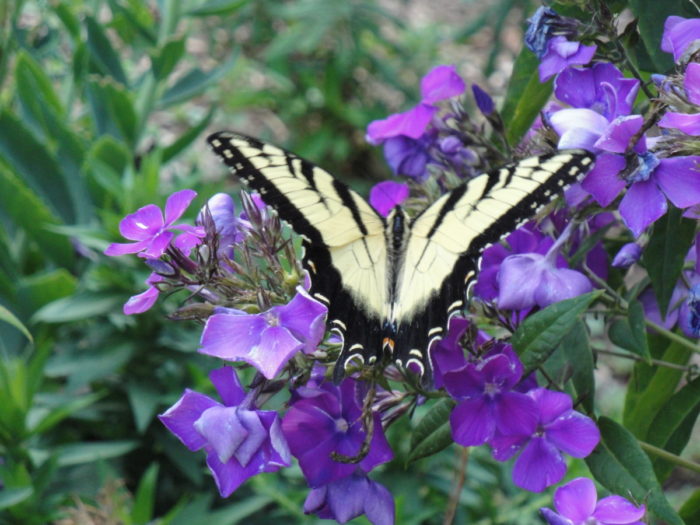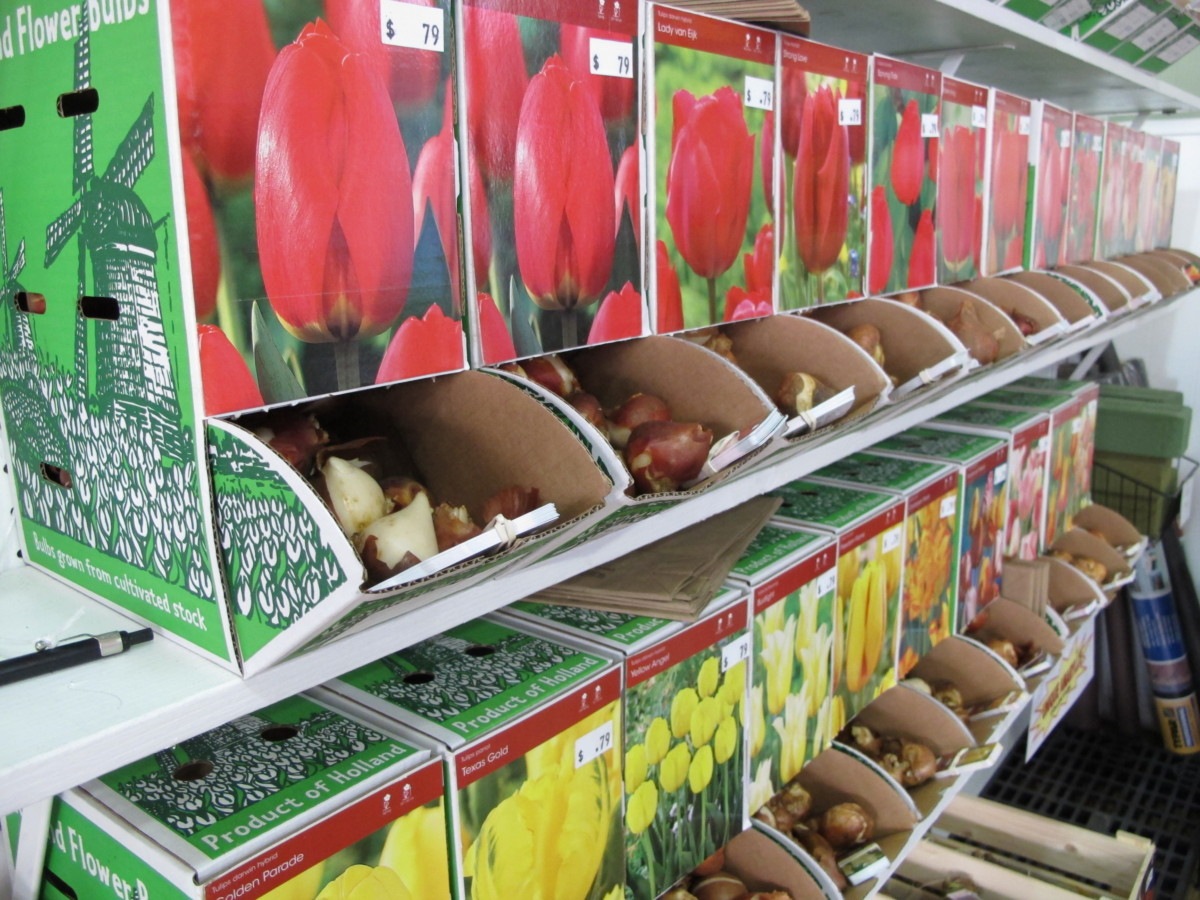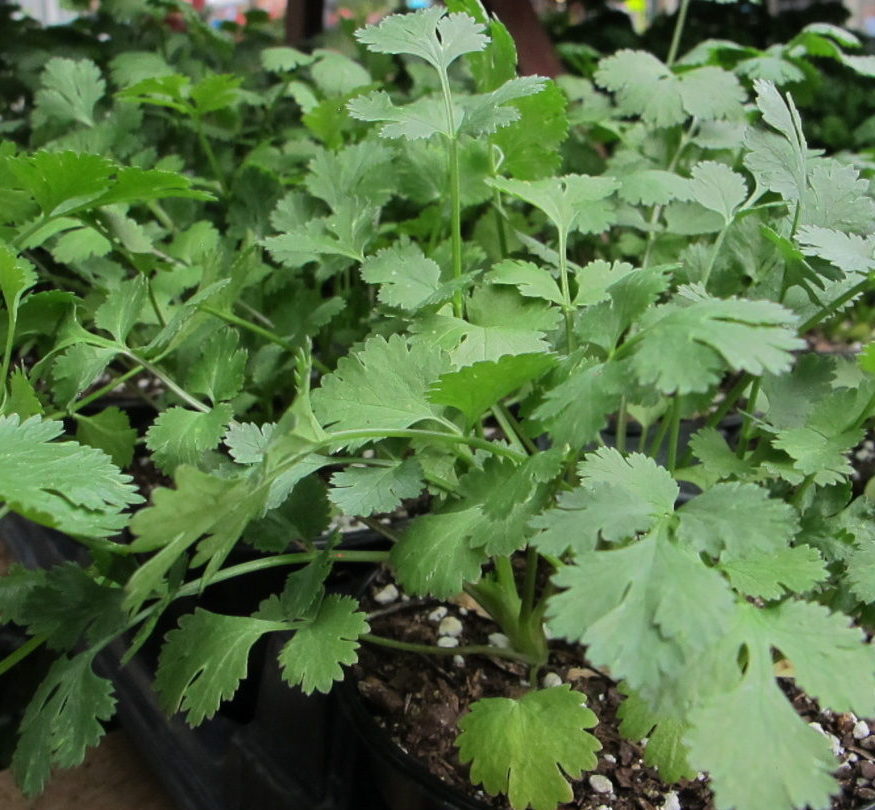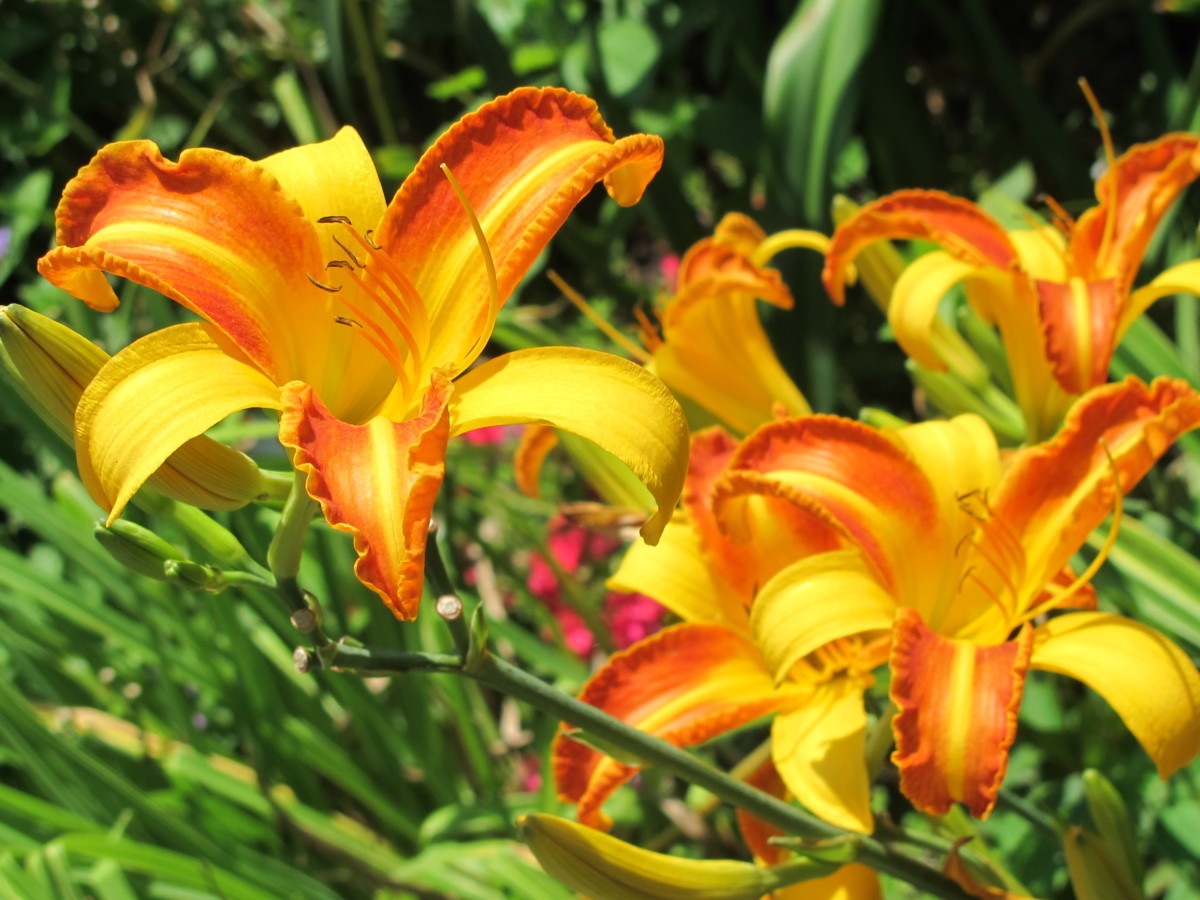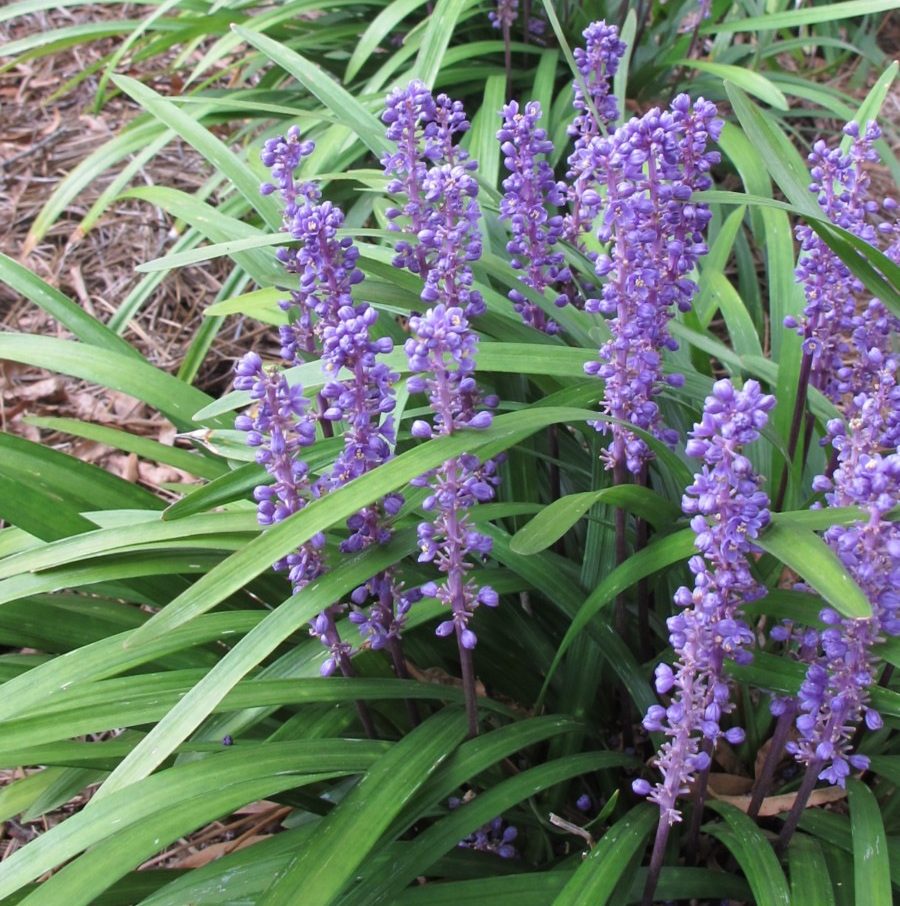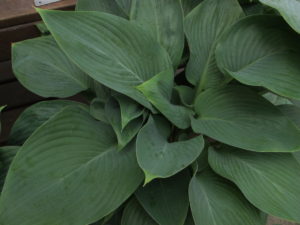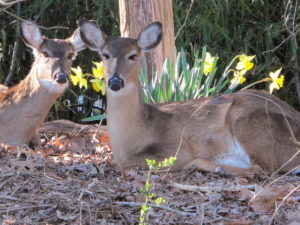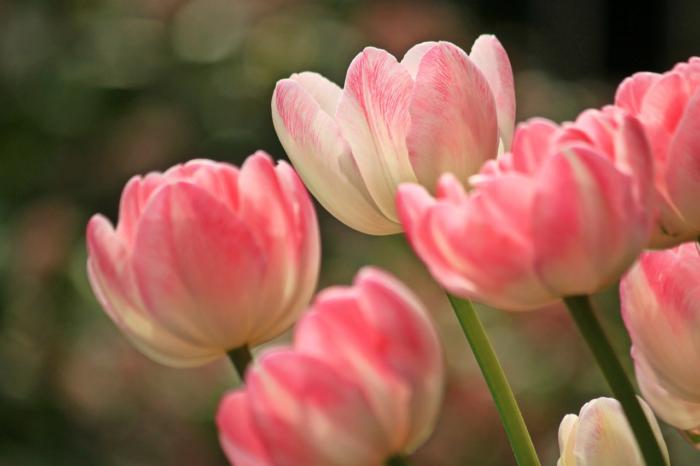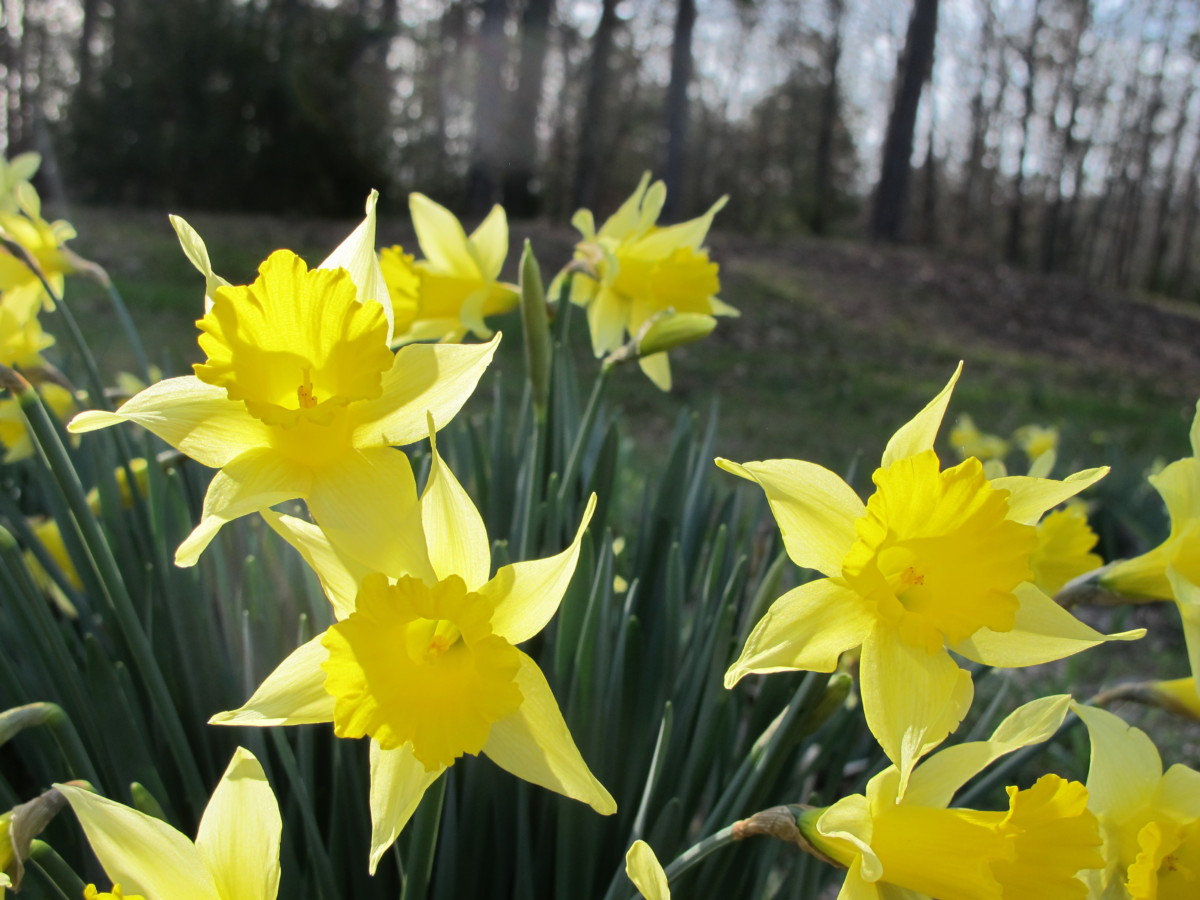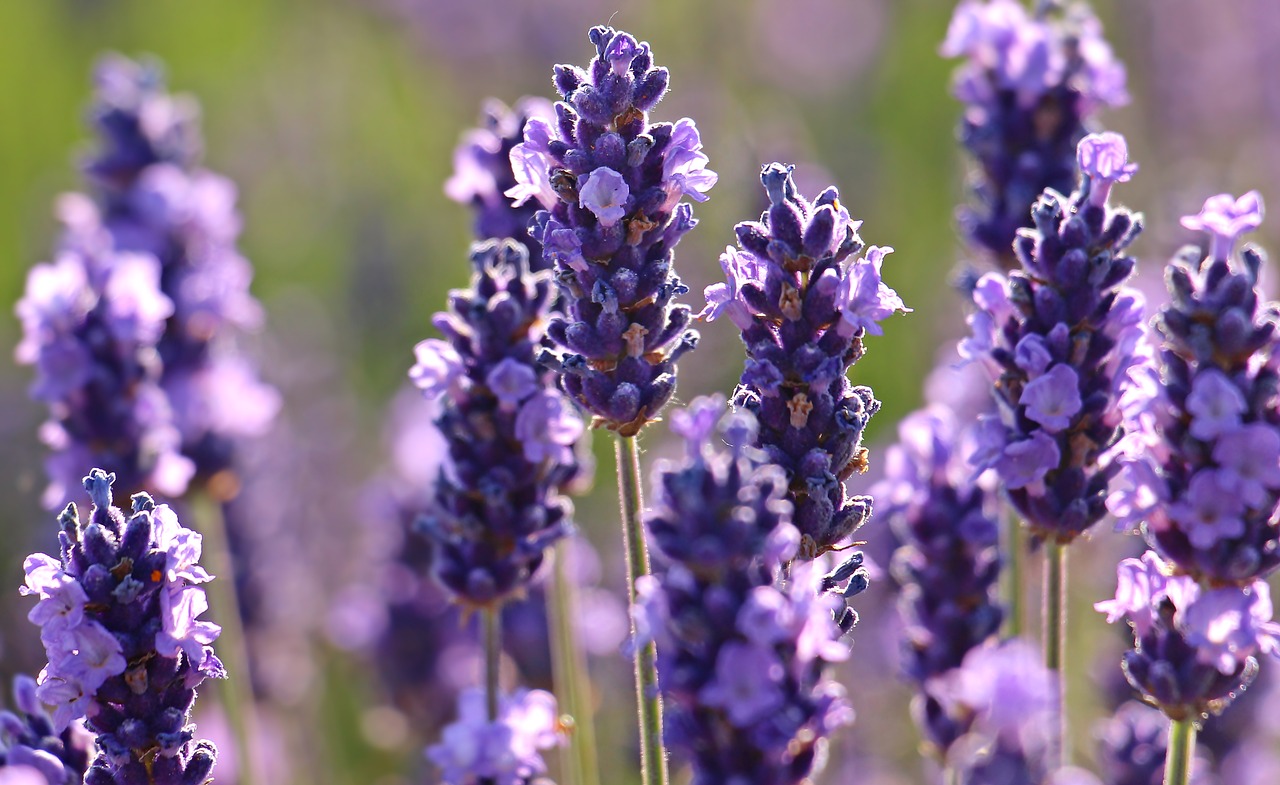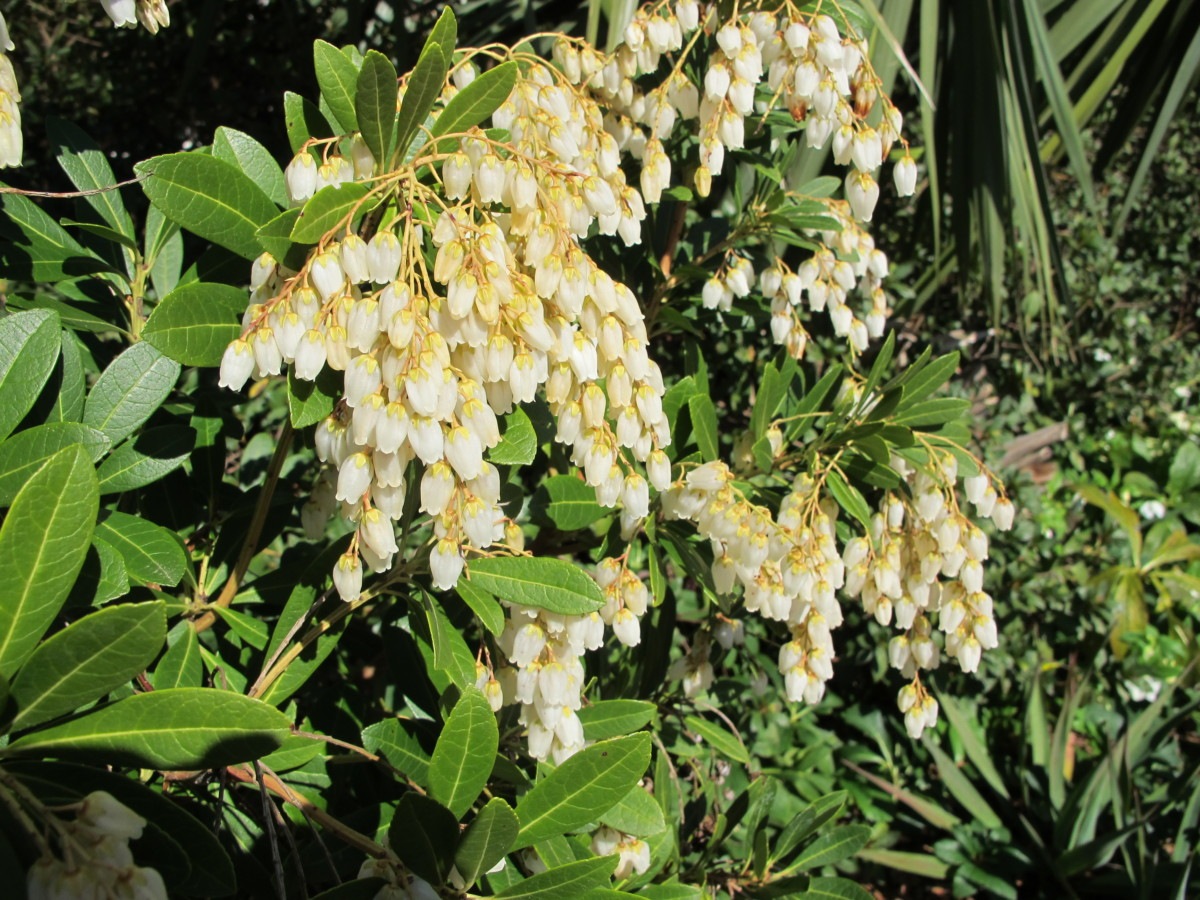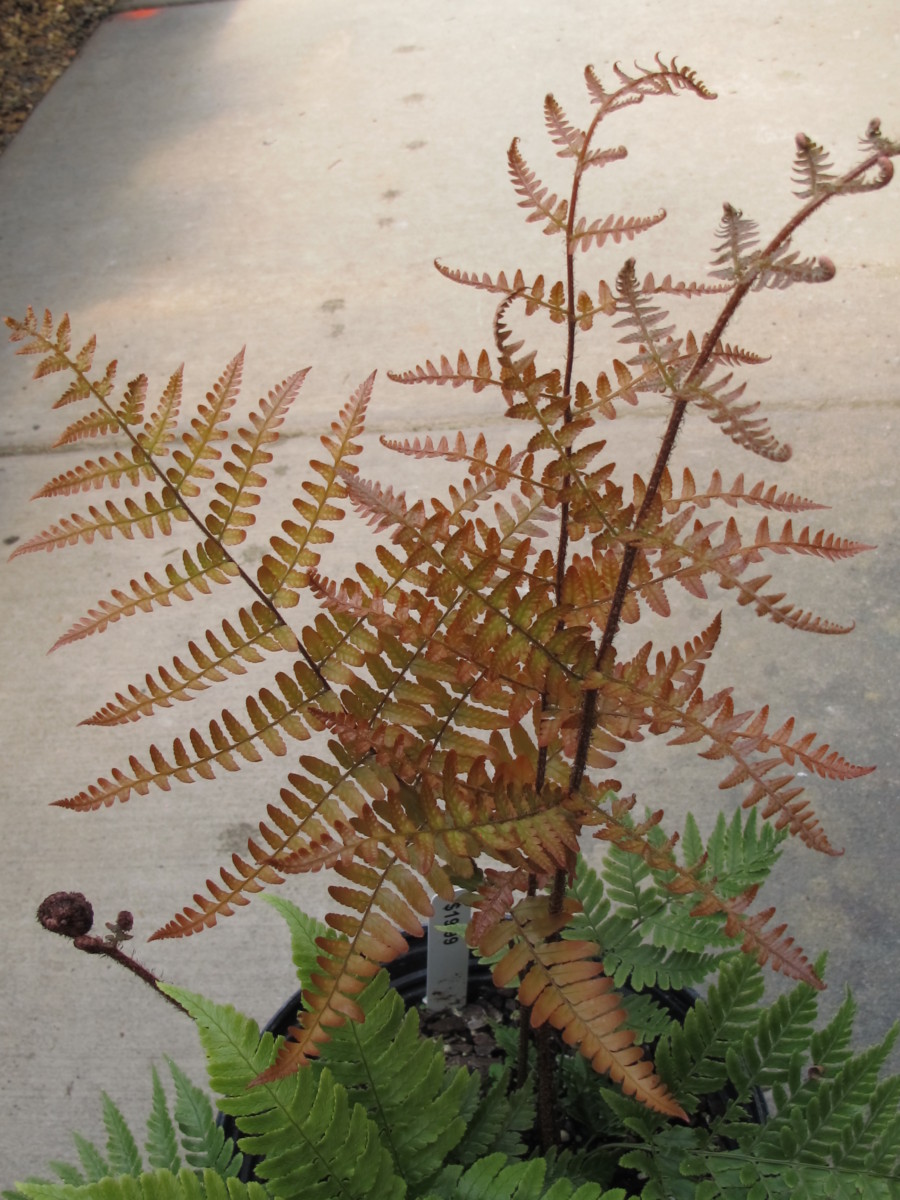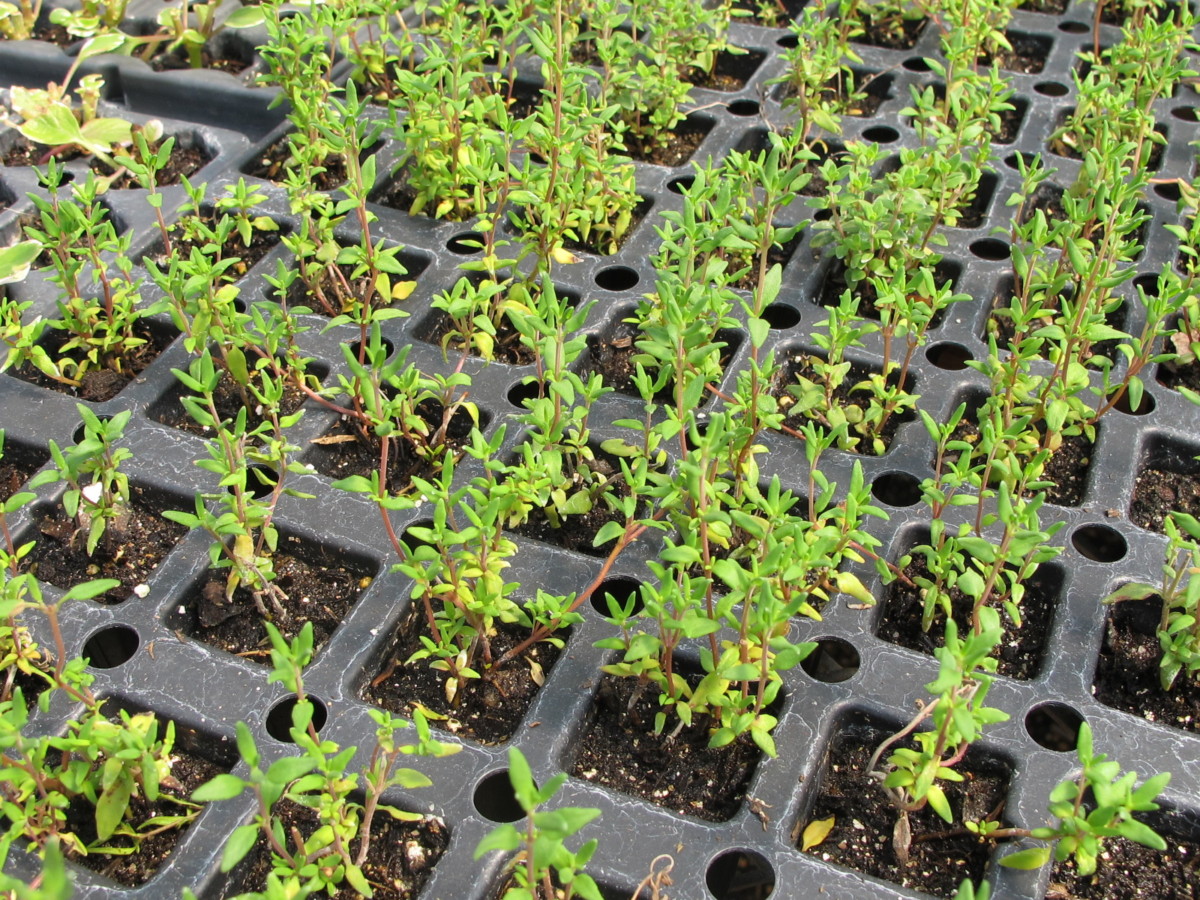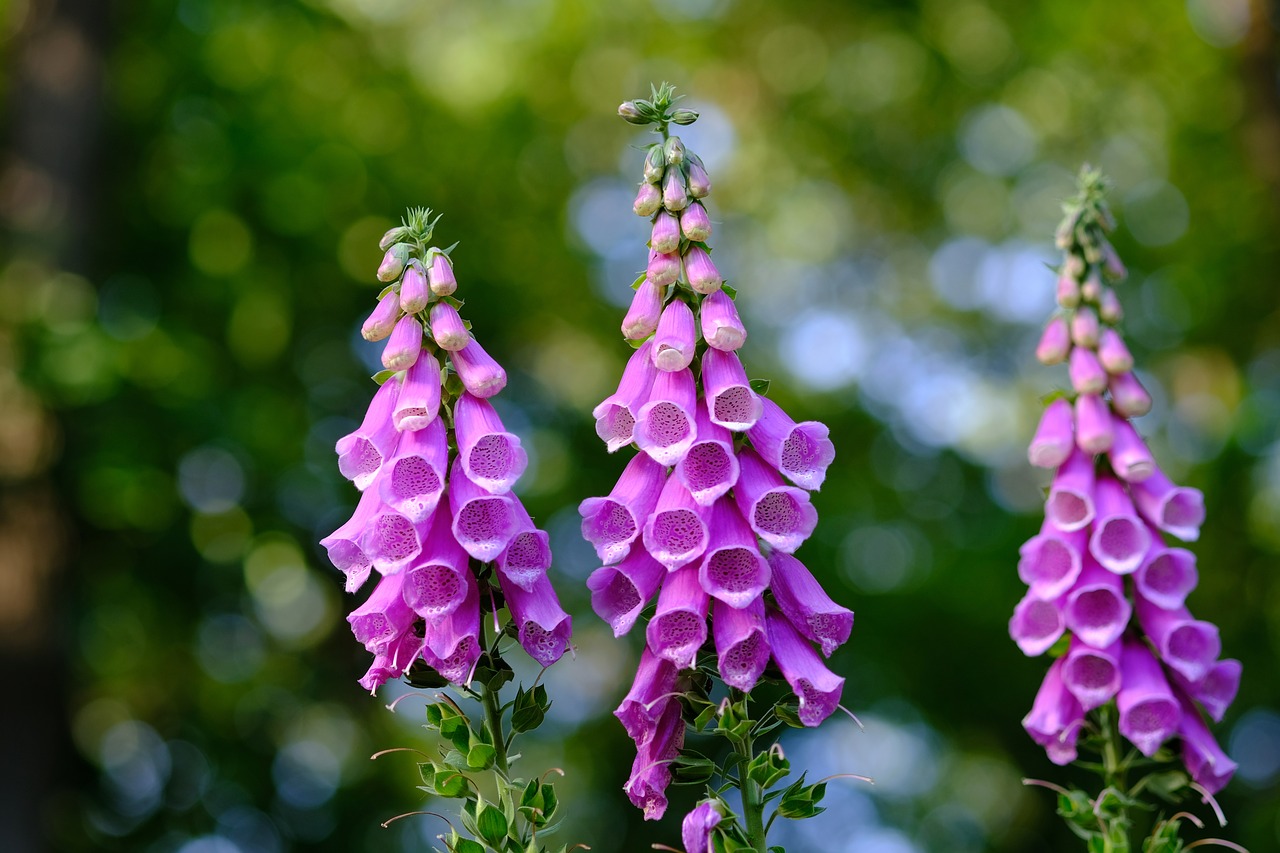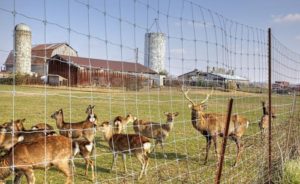Page 3
Plants That Deer Love
Here are some of their favorites. The menu might be different in one location compared to another, but eventually all gardeners will find out what the local population favors.
- Deer will eat azaleas,
- garden phlox,
- tulips,
- hosta ‘Patriot’,
- cilantro, the herb,
- daylilies,
- pansies and violas,
- liriope.
Yews, azaleas, hydrangeas, arborvitae, roses, daylily (Hemerocallis), lilies (from bulbs, Lilium), liriope, sedum, phlox, crocus, tulip, geraniums, pansies, petunias, parsley, cilantro, dill, and fruit trees are some of the hundreds of plants favored by deer. If you include them in your plantings, remember to buy deer repellents and to use them (not on edible plants) as soon as you bring home your new plants!
Hosta = Deer Bait
Hostas come in many sizes and colors. Thousands of cultivars range from the tiny H. venusta and ‘Blue Mouse Ears’ to the huge ‘Blue Angel’. Large, tough, blue-leaved cultivars (photo, above) are less attractive to deer and slugs than the thinner-leaved yellow- and white-variegated types.
This herbaceous perennial is beloved by shade gardeners all around the world, and we’re not likely to give up growing it any time soon. Those of us who love our hostas will protect the plants with repellent sprays, applied regularly, all season long.
And Animals They Like
Wait, what?!
Yes…although I’ve never seen it happen, deer sometimes eat animals, too! This can happen when they’re desperate for nourishment, particularly for minerals. In winter, after greens have been consumed up to 6′ high, they’ll eat carrion, fish that have washed up on shore, and injured or ground-hugging birds. They’ll even feed on the carcass of a dead deer!
They won’t stalk their prey as cats do, but if they’re hungry and snow is covering the ground, they will feed on dead animals just to survive. They’re omnivores, apparently. And all this time, I thought they were strictly vegan.
Plants Deer “Might Not Eat”
On the subject of deer-repelling plants, reality usually doesn’t measure up to the hype. Every gardening magazine and newspaper publishes in their autumn issues articles describing spring-flowering bulbs grown in pots or in gardens. If you plant tulips in the center and surround them with deer-proof daffodils, they promise, animals will avoid eating any of them when they sprout in the spring.
The truth is: deer love tulips, and they’re smart enough to pick out the tulips from the other plants.
- Tulips: not deer-proof.
- Daffodils: deer proof.
If you want to grow tulips in an unfenced landscape, prepare to cover them with netting. Rabbits, too, are fond of them, so anchor the netting into the ground. Or spray them, especially the flower buds, with repellents as soon as they emerge. Tulip foliage is resilient to water, so use a very fine spray to prevent the solution from beading off the waxy leaf surface.
Deer and rabbits sometimes eat tender young fern fronds in the spring, but generally not after that. They usually do not eat ornamental grasses, such as Miscanthus, because of their raspy foliage. Having these plants in your yard will not, however, cause deer to move on to your neighbor’s buffet. These plants are usually resistant to damage:
- Hellebores
- Lavender
- Pieris japonica
- Autumn fern (Dryopteris erythrosora ‘Brilliance’)
- French thyme
- Foxglove (Digitalis)
They tend to avoid allium, barberry, boxwood, caryopteris, colchicum, daffodil, foxglove, hellebore, lavender, pieris, puschkinia, rosemary, sage, santolina, spirea, thyme, and Virginia sweetspire. They usually leave nandina and rhododendron alone, but not always! They might feed on flower buds, which contain more protein than foliage.
By having fewer species that would entice them to visit your property, they might decide it’s not worth coming around to your place. They will become habituated to a different traffic pattern…until they detect that new hosta garden you just planted.
What To Do
Now that deer have discovered your gardens, use some of these methods to encourage them to go elsewhere. If you’ve grown tired of dealing with them in the vegetable garden, consider constructing a cage (“Plant Protection” section of the article, end of link) of some sort to permanently restrict their access.
A tall fence is the ultimate solution to animal invasions. It is costly, for sure, but maybe closing off the vegetable garden or your prize lily garden is affordable. A fence made with tall posts and netting is inexpensive and can be easily removed.
Remember to use a few different modes of action at the same time, and reconfigure the combinations now and then. Read directions on the labels, and watch the weather forecast to properly time applications. Frustrating, for sure. But I am not willing to give up my favorite plants. Or gardening!
Headings
Page 1: The Costs Add Up, Keep Your Distance, Changing Diets (Suburban Deer), Decades of Observation
Page 2: Deer Repellents (Sprays and Tablets, Repellex, More Spray Repellents, Devices, Granules, Barriers, Deer Netting, Gravel and Santolina, Got Milk?, Eggs, And A Few More)
Page 3: Plants That Deer Love (Hosta = Deer Bait, And Animals They Like), Plants Deer “Might Not Eat”, and What To Do

